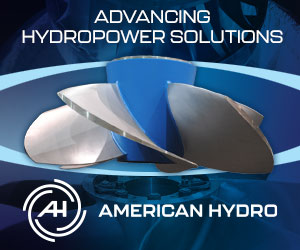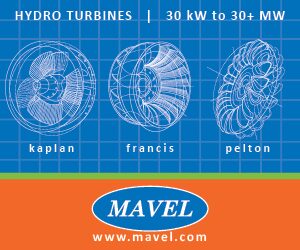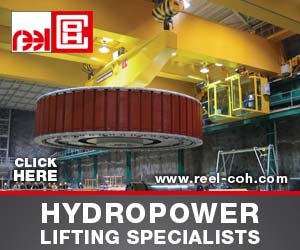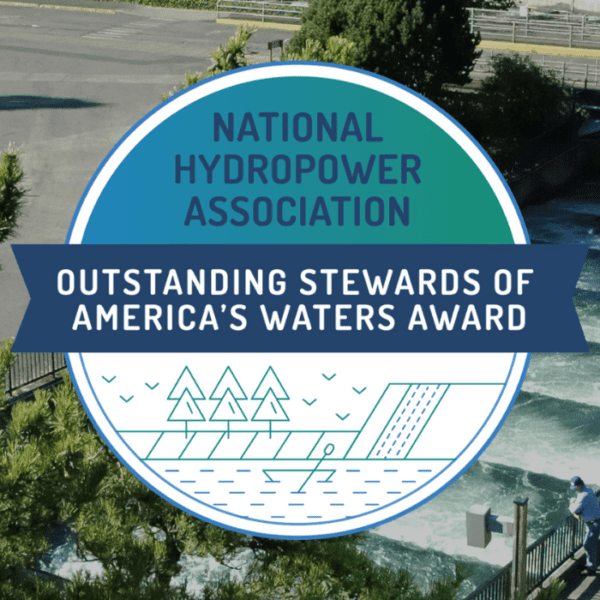Republished with permission from Clearing Up.
Vince Bryan III believes he has the best plan for the immediate future to save Snake River salmon and steelhead. Now, his job is to get the right people to listen.
As CEO of Whooshh Innovations, Bryan says he has a sensible, cost-effective and simple proposal that will immediately get more adult salmon and steelhead past the four lower Snake River dams, and in better shape to continue the journey to spawn. And it could be in operation as soon as 2023.
Armed with a decade of studies, trials and on-the-ground success stories, Bryan is on a mission to solve a problem that has dragged on for more than 30 years by getting the federal government to replace all—or at least some—of the fish ladders at the four dams with Whooshh Passage Portals.
Bryan noted that even if removing the four lower Snake River dams is the best long-term plan to save the river’s ESA-listed fish, his proposal could serve as an interim measure to get more adults back to their spawning grounds in the years or decades it would take to actually breach the dams. The plan would yield results much faster, and, if it’s deployed permanently, would preserve or even boost the Northwest’s biggest clean energy resource—hydropower. With climate change nipping at their tail fins, the company CEO believes there’s no time to lose.
“It frankly amazes me—shocks me—that people are not all over this,” Bryan told Clearing Up. He said the nonprofit organizations that are pushing to remove the four lower Snake River dams should be leading the charge.
For a total of $67 million—or 500 times cheaper than Rep. Mike Simpson’s (R-Idaho) $33.5 billion proposal to breach the four lower Snake River dams—Bryan’s plan proposes to replace the two fish ladders at each of the four dams and use the water that usually flows in the fish ladders to generate power instead. The added power generation would more than pay for the purchase price in 10 years, he said.
“From our standpoint, we think that our biggest problem as a planet right now is this climate change that we’re all experiencing, and what you can’t do is take away a clean, renewable resource like hydropower. If you do, how do you expect us to make any progress at all on cleaning up the energy grid? So that means we have to figure out this fish issue,” Bryan said.
Whooshh Innovations is probably best known for its “Salmon Cannon” after a video on the technology went viral. But the cannon is a predecessor of the more complex Whooshh Passage Portal, which does much more than just safely move fish great distances. The Passage Portal attracts fish to a floating structure, where they swim into the tube that pushes them up and over the dam in seconds, all without being handled.
The system scans and identifies the fish. It can separate out an invasive species or hatchery fish and send them to a different location.

Bryan acknowledges that many advocates of dam removal believe that juvenile survival is the bigger problem. While he doesn’t agree, he’s also developing the technology to boost the downstream juvenile survival.
“But we have to solve the upstream problem first,” he said, noting that without the adult returns, there are no juveniles to save. “You cannot afford to lose a single adult on the way up if you want to rebuild these numbers, and you are losing them at every location.”
Bryan said to help get his alternative plan for the Snake River off the ground, the company has been meeting quarterly with the National Marine Fisheries Service and the U.S. Fish and Wildlife Service. He’s also had discussions with BPA and the U.S. Army Corps of Engineers, and presented his draft proposal to federal lawmakers from the Pacific Northwest. Washington Gov. Jay Inslee has visited the company’s operations and company officials are hoping to meet with Simpson’s office in August.
The politicians are desperate for a solution, he said. But they need the support of their constituents and of the groups that have been involved in the lower Snake River dam saga.
To help demonstrate that support, Whooshh Innovations opened its stock to public purchase, allowing people to directly buy shares in the company through Start Engine. “The reason that’s important is, everybody can get involved in Whooshh. You can take action today. And it is powerful for us to be able to say to the legislators that we have constituents in your state or county that are owners in this, and that they care,” Bryan said.
Bryan said his proposal to get more adults to their spawning areas goes for some of the low-hanging fruit. “There’s so much discussion about what to do, and so little that gets done,” he said. “Why don’t we create a whole bunch more habitat for salmon simply by removing the nonnative fish that shouldn’t be there in the first place?”
Bryan believes that the Columbia Basin’s current capacity will hold about 10 million returning fish a year. “We’re doing that. We’re just doing it with the wrong fish,” he said.
He’s referring to the millions of American shad—a nonnative eastern species that was introduced in the West decades ago—that return to the Columbia River every year. So far this year, 5.58 million have been counted at Bonneville Dam, with 500 to 1,000 continuing to pass every day. Almost 244,000 of them have entered the Snake River, and nearly 46,000 crossed the four lower Snake River dams that have fish ladders. Scientists are still trying to determine whether shad have negative impacts on salmon.
In addition, American shad provide food for other nonnative fish, like bass and walleye, which also eat juvenile salmon.
But to Bryan, it’s just common sense that there’s not enough habitat for all those shad and the salmon and steelhead we’re trying to recover. He said at the very least, the salmon that migrate at the same time don’t like being in the ladders at the same time, so it causes a delay which depletes their energy and exposes them to more predators and warmer river conditions.
He said in the past, one could argue that his system isn’t ready for this major task. “I don’t think you can make that argument anymore,” he said, adding, “The best proof is the Fraser River project.” A massive landslide in June 2019 blocked the Fraser River near Big Bar, British Columbia, spilling 1,800 tons of rock into the river. That year, the vast majority of sockeye and Chinook salmon were lost. In 2020, Whooshh worked with Canadian officials and First Nations to install Whoosh tubes, helping thousands of salmon pass the blocked river.
“We had an emergency situation. And we could argue we have that today in the Columbia and Snake. It’s not as dramatic, but it’s the same thing—the fish can’t get through, and they’re dying,” Bryan said.
He said the real advantage of his proposal is that its low cost, and it’s not a permanent fixture, so it can be adapted to changing conditions or situations, including new issues posed by climate change. Some might see it as risky, but “I think the bigger risk is not doing anything, or doing what you’ve done before,” he said.
The problem is that change doesn’t come easy. “We have to be willing to admit that what we’ve done for years, and what we keep repeating, is not going to produce a different result,” he said. Or, because of climate change, the result will be different—and much worse—for fish.
“We’ve taken longer than we thought to get to this point because of all the testing, but we’re now there. And the consequences of not using it is becoming clearer, he said, adding, “It could all be done now if we wanted to. Let’s solve this problem.”
Clearing Up, published by News Data, is a leading energy news/information source for Northwest energy professionals.










